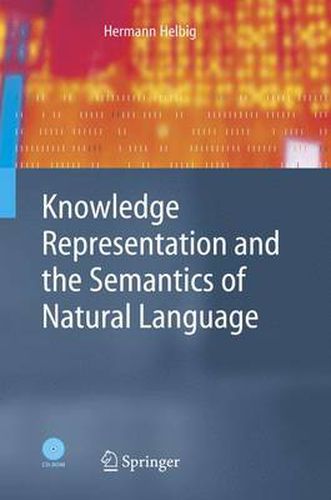Readings Newsletter
Become a Readings Member to make your shopping experience even easier.
Sign in or sign up for free!
You’re not far away from qualifying for FREE standard shipping within Australia
You’ve qualified for FREE standard shipping within Australia
The cart is loading…






This title is printed to order. This book may have been self-published. If so, we cannot guarantee the quality of the content. In the main most books will have gone through the editing process however some may not. We therefore suggest that you be aware of this before ordering this book. If in doubt check either the author or publisher’s details as we are unable to accept any returns unless they are faulty. Please contact us if you have any questions.
Natural Language is not only the most important means of communication between human beings, it is also used over historical periods for the pres- vation of cultural achievements and their transmission from one generation to the other. During the last few decades, the ?ood of digitalized information has been growing tremendously. This tendency will continue with the globali- tion of information societies and with the growing importance of national and international computer networks. This is one reason why the theoretical und- standing and the automated treatment of communication processes based on natural language have such a decisive social and economic impact. In this c- text, the semantic representation of knowledge originally formulated in natural language plays a central part, because it connects all components of natural language processing systems, be they the automatic understanding of natural language (analysis), the rational reasoning over knowledge bases, or the g- eration of natural language expressions from formal representations. This book presents a method for the semantic representation of natural l- guage expressions (texts, sentences, phrases, etc. ) which can be used as a u- versal knowledge representation paradigm in the human sciences, like lingu- tics, cognitive psychology, or philosophy of language, as well as in com- tational linguistics and in arti?cial intelligence. It is also an attempt to close the gap between these disciplines, which to a large extent are still working separately.
$9.00 standard shipping within Australia
FREE standard shipping within Australia for orders over $100.00
Express & International shipping calculated at checkout
This title is printed to order. This book may have been self-published. If so, we cannot guarantee the quality of the content. In the main most books will have gone through the editing process however some may not. We therefore suggest that you be aware of this before ordering this book. If in doubt check either the author or publisher’s details as we are unable to accept any returns unless they are faulty. Please contact us if you have any questions.
Natural Language is not only the most important means of communication between human beings, it is also used over historical periods for the pres- vation of cultural achievements and their transmission from one generation to the other. During the last few decades, the ?ood of digitalized information has been growing tremendously. This tendency will continue with the globali- tion of information societies and with the growing importance of national and international computer networks. This is one reason why the theoretical und- standing and the automated treatment of communication processes based on natural language have such a decisive social and economic impact. In this c- text, the semantic representation of knowledge originally formulated in natural language plays a central part, because it connects all components of natural language processing systems, be they the automatic understanding of natural language (analysis), the rational reasoning over knowledge bases, or the g- eration of natural language expressions from formal representations. This book presents a method for the semantic representation of natural l- guage expressions (texts, sentences, phrases, etc. ) which can be used as a u- versal knowledge representation paradigm in the human sciences, like lingu- tics, cognitive psychology, or philosophy of language, as well as in com- tational linguistics and in arti?cial intelligence. It is also an attempt to close the gap between these disciplines, which to a large extent are still working separately.